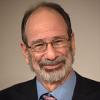Robert Gutman draws my attention to this article from the English language Iranian Financial Tribune: Sunday, April 23, 2017
Strides in Organ Transplant
I'm not sure where the claim in the first sentence of 50,000 organ transplant "
surgeries" comes from, but the rest of the article (which seems to talk about a total closer to 5,000
transplants) is an interesting view of the situation in Iran.
"
Over 50,000 organ transplant surgeries were conducted during the last fiscal year that ended on March 20.
Around 2,500 kidney, 802 liver, 119 heart, 30 pancreas and several intestine and lung as well as 1,040 bone marrow transplants were performed in Iran during the period, said Seyyed Mohammad Kazemeini, head of the Organ Transplant Management Office at the Health Ministry.
“This impressive number of transplant surgeries has helped save many lives as well as more than $1.8 billion in foreign exchange, as patients would otherwise have paid huge amounts for the medical help abroad. Some were even treated free,” the official was quoted as saying by ISNA.
However, he regretted that insurance companies still refuse to cover expenses of organ transplants despite a government directive last year.
“Insurance companies are not complying and the Health Ministry has to draw on its own resources to provide free services for some patients,” he said and hoped the ministry’s support would continue.
“During this year’s New Year holidays (March 21- April 2), 93 transplants were performed,” which shows the preparedness of the medical fraternity.
Iranian organ transplant teams are capable of providing assistance and training to neighboring countries, he said.
Last year a team of experts from Mashhad, capital of the northeastern Khorasan Razavi Province, carried out 47 renal transplants in Afghanistan, and medical teams from Shiraz, capital of the southwest Fars Province, conducted 20 operations in Pakistan and Tajikistan.
Shiraz University of Medical Sciences is known for its accomplishments in liver transplants and the hospitals under its coverage are among the top medical centers in the world with regard to the number of surgeries performed. On average, 500 liver transplants and 300 kidney surgeries are annually undertaken in Shiraz, which also has the distinction of performing the first kidney transplant in Iran in 1968 at the prestigious Namazi Hospital.
A specialized hospital is now planned to be established in Shiraz for organ transplants.
Iran ranks third worldwide in organ donation and is the only country in the world that has addressed the shortage of transplant organs through a legal payment system since 1988 when living non-related donation (LNRD) was legalized, making it the only country where organ sale is legal.
There are currently 46 organ transplant centers in the country and 25 facilities for organ donation.
Increase in Brain-Dead Organ Donation
According to Kazemeini, people’s tendency to donate organs of brain-dead patients in their families has increased significantly.
“Last year, 57% of transplant kidneys were donated by brain-dead patients,” he said.
In the past organ donation or sale by living people was predominant. The acceptance of organs of brain-dead patients has improved remarkably due to legal and religious decrees and widespread awareness campaigns on the issue.
Organ transplant is a medical procedure in which an organ is removed from one body and placed in the body of a recipient, to replace a damaged or missing organ.
Today, over 1.4 million people have voluntary organ donation cards in the country. On average, 700 organ donations (nine per million people) are made annually according to official statistics.
Organs that have been successfully transplanted include heart, kidney, liver, lung, pancreas, intestine, and thymus. Worldwide, kidneys are the most commonly transplanted organs, followed by liver and heart. Organ donors may be living, brain dead, or dead via circulatory death.
In the fiscal year that ended in March 2016, from among the 8,000 people confirmed as brain dead at Iranian hospitals, 1,400 kidneys (and 2,300 organs) were donated.
Kidney transplants account for nearly 75% of all organ replacement surgeries while liver and heart transplants comprise 22% and 3% of the total number. More than half of all transplanted kidneys (56%) were from brain-dead donors and 44% were from living people.
Kazemeini had earlier pointed to Iran’s top position in the field of kidney transplant in the Middle East. On average, 3,000 kidney transplants are conducted every year and Iranian surgeons have transplanted over 35,000 kidneys so far."
 Alvin Roth, 2012 Nobel Laureate in Economic Sciences and Professor of Economics, Stanford University
Alvin Roth, 2012 Nobel Laureate in Economic Sciences and Professor of Economics, Stanford University Alvin Roth, 2012 Nobel Laureate in Economic Sciences and Professor of Economics, Stanford University
Alvin Roth, 2012 Nobel Laureate in Economic Sciences and Professor of Economics, Stanford University




